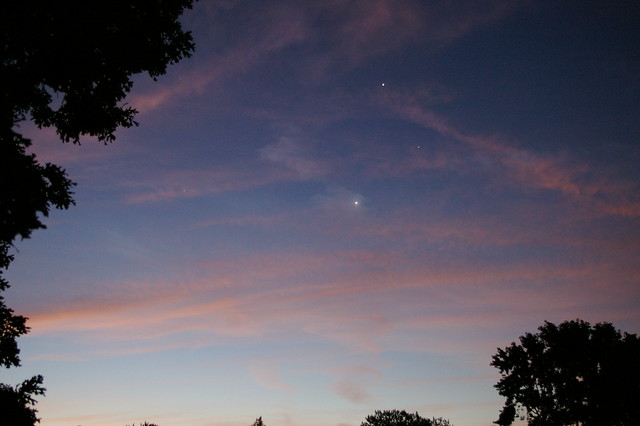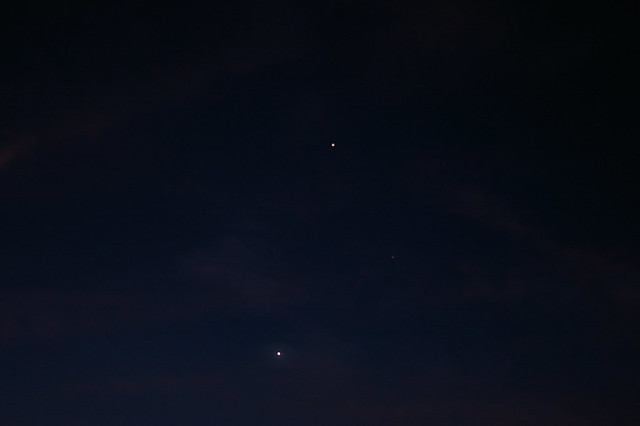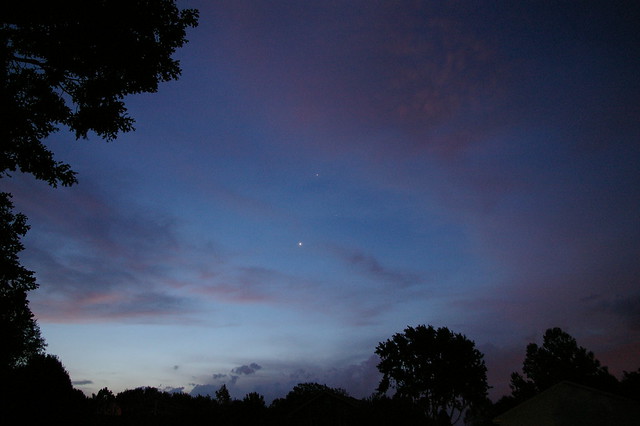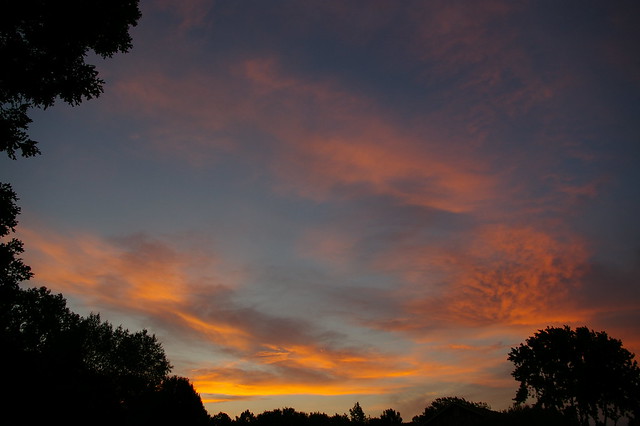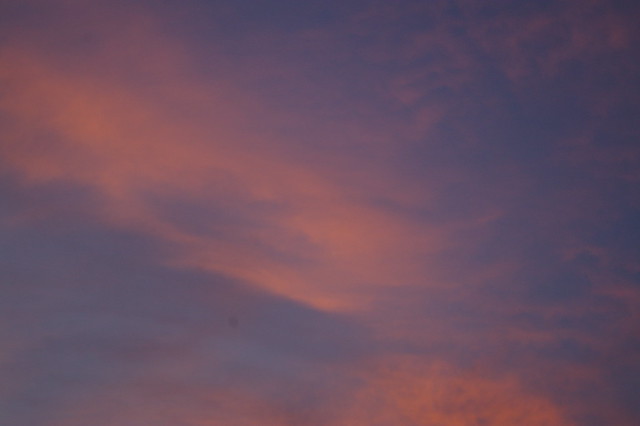The weather forecast for today predicted over an eighty percent chance of rain so I either needed to make my observation before midnight or wait a couple of days for cloudless skies. Fifteen minutes before my Mythgard Academy class started last night (at nine o’clock Central Time), I decided to make my first observation. I set the timer on my smartwatch for ten minutes and hung outside while my neighbors to the north decided a fire in their firepit was warranted (not helping my light pollution survey one bit). My neighbor to the south also appeared to have search lights trained on my backyard so adjusting my eyes for optimal viewing already had steep hills to climb. I somewhat patiently waited for the timer to count down.
Meanwhile, I found Venus immediately, very high and extremely bright in the west. Next, both Procyon and Sirius shown brightly in the upper and lower southwest. Even though the sun had set over an hour ago, the western sky still seemed dimly luminescent and I detected a very slight haze obscuring the fainter stars. My timer buzzed and I began sketching out the brightest stars and the only constellation I could identify – Orion – sinking slowly into the southwestern horizon. To the north I could just barely make out Polaris but could not find the Big or Little Dipper (mostly because the trees are starting to leaf out).
Almost directly overhead but still on the eastern side of the zenith, I could barely make out a sickle, an asterism that can be found in the constellation Leo (see diagram below). I had checked the Sky and Telescope Interactive Star Chart before stepping outside so I knew where to crane my neck in the hopes of spotting the lion. In addition to the sickle, I could also make out, barely, the triangle of stars that form the lion’s rear and tail. I could not tell where Leo ended and Virgo began as the stars were so faint I gave up.

I returned to my computer, logged into the Webinar and while I waited for it to start, I verified my sketch against the star chart. I had found Leo, but only by the very brightest of it’s stars (which aren’t that bright when you compare them to Sirius, Vega or Procyon). Fast forward two hours, where I found myself nodding off and decided I’d consumed enough First Age elven antics for one session and bailed out of the webinar (I can always watch the last 15-30 minutes via YouTube later).
I went back outside and noticed immediately the haze had disappeared. The air was crisper and I didn’t even need to wait the full ten minutes before I could clearly see the constellation Leo, now slightly west of top-dead-center overhead. My northern neighbors were still enjoying their outdoor fire but my southern neighbors had toned down the search lights to just one very bright LED porch light.
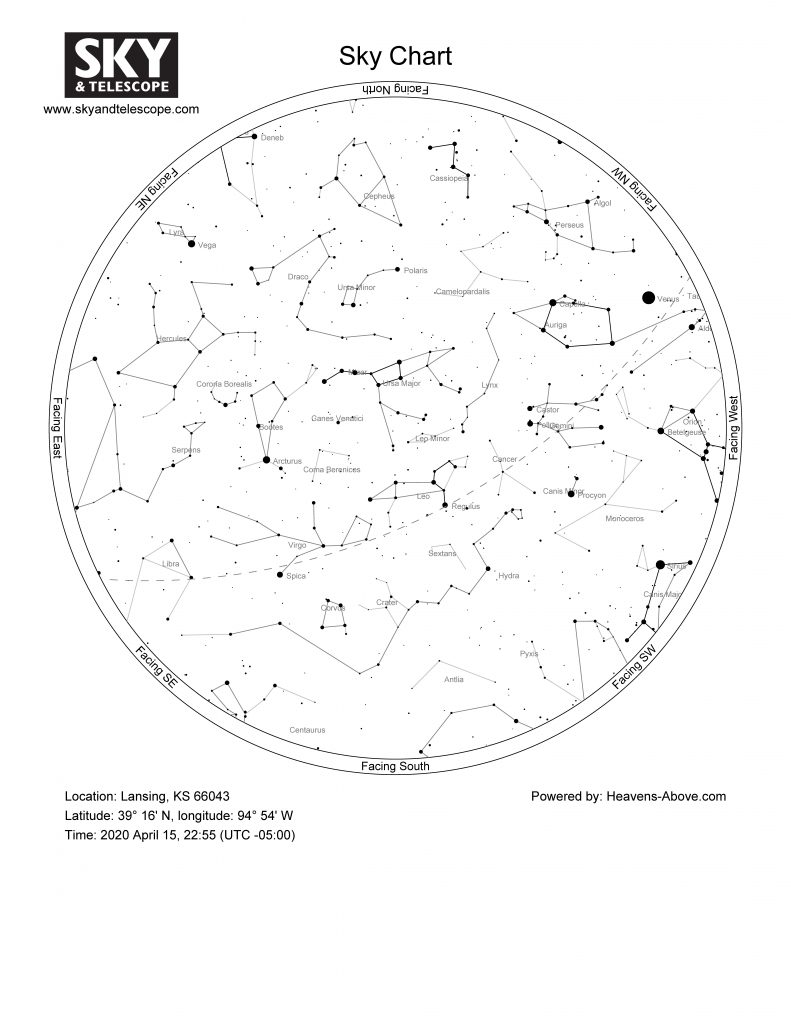
I returned inside and recorded both of my observations via the Globe at Night web site. I plan to repeat my observations each night weather permitting until the middle of next week.
How did your observations go?

